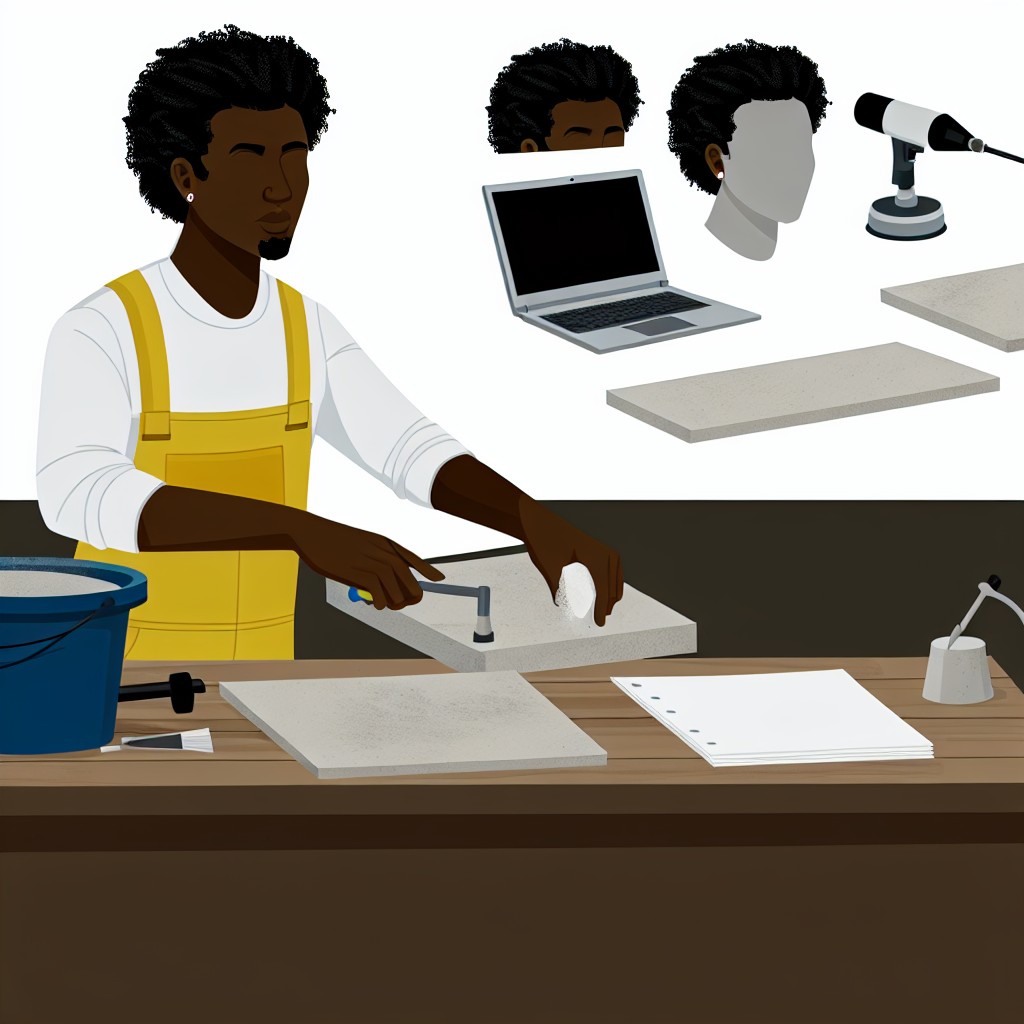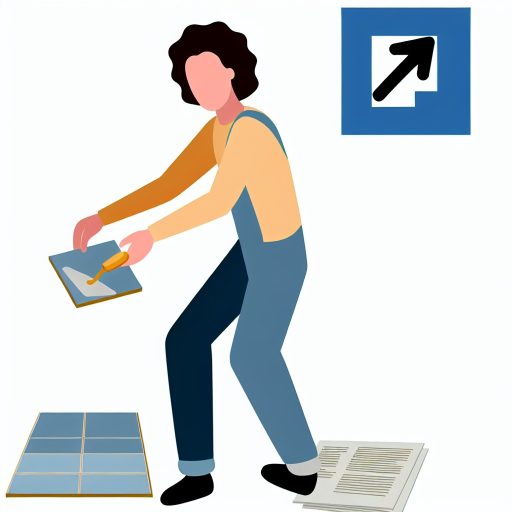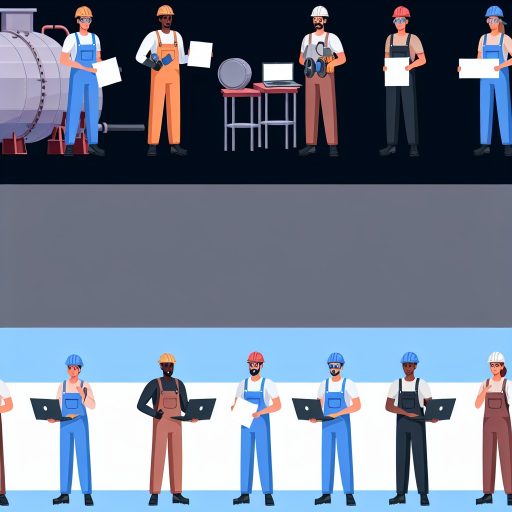Introduction
As a concrete finisher, maintaining your tools is crucial.
Proper maintenance ensures efficiency and longevity.
Neglecting maintenance can lead to decreased productivity.
It can also cause costly replacements.
This post will discuss key steps to keep your tools in top condition.
Clean tools after each use
Emphasize the importance of removing excess concrete and debris.
Prevent buildup that can affect the next use of the tool.
Recommend using a wire brush or power washer for thorough cleaning.
- Emphasize the importance of removing excess concrete and debris.
- Prevent buildup that can affect the next use of the tool.
- Recommend using a wire brush or power washer for thorough cleaning.
When it comes to maintaining your tools as a concrete finisher, storing them properly is essential.
Here are some key points to consider.
Significance of Storing Tools in a Dry and Secure Location
- Moisture can lead to rust and corrosion, reducing the lifespan of your tools.
- Storing tools in a dry location helps prevent damage and ensures they remain in optimal condition.
- Secure storage prevents theft and unauthorized access to your tools, keeping them safe.
Avoid Exposure to Moisture and Harsh Weather Conditions
- Moisture can cause metal tools to rust and wooden handles to swell or rot.
- Keep tools protected from rain, snow, and humidity to maintain their quality.
- Extreme temperatures can also damage tools, so store them in a controlled environment.
Benefits of Using Toolboxes or Shelves to Keep Tools Organized
- Toolboxes provide a designated space for each tool, making it easy to locate and access them.
- Shelves help keep tools off the ground, reducing the risk of damage or loss.
- Organizing tools also saves time and frustration when you need to find a specific tool.
Following these tips ensures your tools remain in good condition.
Your tools will be ready for use whenever you need them on the job.
Discover More: How to Start Your Own Painting Business
Sharpen Blades and Edges Regularly
Keeping blades and edges sharp is crucial for the efficiency and quality of work.
Use a file or grinder to sharpen tools as needed to maintain their sharpness.
Working with sharp tools not only improves performance but also enhances safety on the job.
Regular maintenance of blades and edges is essential for concrete finishers.
It ensures the quality of their work and enhances efficiency on the job.
Here are some key points to consider when it comes to sharpening your tools.
Importance of Sharp Blades and Edges
- Sharp blades and edges improve the overall efficiency of the tools, allowing for smoother and more precise cuts in concrete.
- Having sharp tools can significantly enhance the quality of the finish on concrete surfaces, resulting in a better end product.
- Blades and edges that are kept sharp reduce the amount of effort and time required to complete tasks, making the job easier and more enjoyable.
Methods for Sharpening Tools
- One common method for sharpening tools is to use a file, which can quickly and easily restore the sharpness of blades and edges.
- Alternatively, a grinder can be used to sharpen tools, providing a more precise and consistent edge for cutting through concrete.
- Regularly inspecting tools for dullness and sharpening them as needed will help maintain their performance and longevity.
Advantages of Using Sharp Tools on the Job
- Working with sharp tools not only improves the quality of work but also reduces the risk of accidents and injuries on the job site.
- Sharp blades and edges allow for cleaner and more precise cuts, resulting in a neater finish on concrete surfaces.
- When tools are sharp, less force is required to complete tasks, reducing strain on the body and preventing fatigue during long hours of work.
Sharpening blades and edges regularly is a simple yet effective way to maintain quality and efficiency as a concrete finisher.
Transform Your Career Today
Unlock a personalized career strategy that drives real results. Get tailored advice and a roadmap designed just for you.
Start NowBy keeping your tools sharp, you can improve the performance of your work while ensuring safety on the job.
Gain More Insights: Understanding Machining Processes: A Beginner’s Guide
Inspect tools for wear and tear
- Encourage regular inspection of tools for any signs of damage or wear.
- Address issues promptly to prevent further damage or accidents.
- Provide tips for repairing or replacing damaged tools.
Regular inspection of your tools is crucial as a concrete finisher.
You should always check your tools for any signs of wear and tear.
Ensure they are in good working condition.
By inspecting your tools regularly, you can prevent accidents and avoid costly repairs or replacements.
One of the first things you should do when inspecting your tools is to look for visible signs of damage.
This could include cracks, chips, or other noticeable wear and tear.
It is important to address these issues promptly to prevent them from getting worse.
If you notice any damage to your tools, take necessary steps to repair or replace them.
Depending on the severity of the damage, you may be able to fix them yourself or seek professional help.
For minor repairs, you can use epoxy or other bonding agents to mend cracks or chips.
However, for significant damage, it is best to replace the tool altogether.
In addition to physical damage, pay attention to how your tools are performing.
If you notice unusual sounds or vibrations while using them, it may be a sign something is wrong.
In such cases, stop using the tool and have it inspected by a professional.
Maintaining and repairing your tools is essential to ensure the quality of your work.
By taking care of your tools and addressing issues promptly, you can prolong their lifespan and save time and money.
Remember, prevention is always better than cure when it comes to tool maintenance.
Make it a habit to inspect your tools regularly and address any issues as soon as they arise.
Transform Your Career Today
Unlock a personalized career strategy that drives real results. Get tailored advice and a roadmap designed just for you.
Start NowYour tools are your most valuable asset as a concrete finisher, so take good care of them.
Uncover the Details: Assembler’s Checklist: Preparing for a New Job
Lubrication Benefits for Maintaining Tools
Keeping your tools properly lubricated is essential.
Lubrication maintains tool functionality and longevity.
Here is why lubrication is crucial.
- Rust prevention: Lubricants create a barrier that protects metal parts from rust and corrosion, especially in humid environments.
- Friction reduction: Lubrication reduces friction between moving parts, preventing wear and tear that can lead to premature tool failure.
- Optimal performance: Well-lubricated tools operate more smoothly and efficiently, making your job easier and safer.
When choosing the right lubricant for your tools, consider a few options.
- WD-40: This all-purpose lubricant is great for loosening rusted parts, displacing moisture, and protecting against corrosion.
- Grease: For heavy-duty tools that withstand high temperatures and pressure, grease is the best choice for long-lasting lubrication.
Here is how to properly apply lubricants to your tools.
- Clean the parts: Before lubricating, clean moving parts with a degreaser or solvent to remove dirt and old lubricant.
- Apply in small amounts: Use a small brush or applicator to apply lubricant precisely where it is needed, avoiding over-lubrication.
- Distribute evenly: Spread the lubricant evenly over moving parts to ensure smooth operation and maximum protection.
Regularly lubricating tools with the right products extends their lifespan.
Use proper application to maintain peak tool performance.
Do not overlook this simple yet crucial maintenance task!
Discover More: DIY Roofing Projects: When to Call a Professional Roofer

Replace worn out parts
As a concrete finisher, it is crucial to regularly inspect your tools.
You must check for any signs of wear and tear.
Replacing worn out parts is essential.
This helps maintain the functionality and efficiency of your tools.
- Identify common parts that may need replacement.
- Handles: Handles of tools such as trowels or floats may get worn out due to constant use.
- Blades: Blades of finishing tools like edgers or groovers can become dull over time.
- Advise on the importance of replacing worn out parts.
- Worn out parts can affect the quality of your finish.
- They also make your work more challenging.
- Replacing worn out parts can help maintain the performance and longevity of your tools.
- Provide guidance on finding replacement parts.
- Check with the manufacturer of your tools for original replacement parts.
- Look for reputable retailers or online stores that specialize in construction tools and accessories.
- Proper installation techniques.
- Follow the manufacturer's instructions for replacing parts to ensure proper installation.
- Use the appropriate tools and techniques to securely attach the new parts to your tools.
By regularly replacing worn out parts of your tools, you ensure they remain in optimal condition.
This allows them to deliver high-quality results in your concrete finishing projects.
Keep Tools Organized and Inventory
Organization is key for efficiency and safety when working with concrete tools.
Create an inventory list of all your tools to keep track of maintenance schedules and replacements.
Suggestions for organizing tools in a workshop or job site include:
Transform Your Career Today
Unlock a personalized career strategy that drives real results. Get tailored advice and a roadmap designed just for you.
Start Now- Invest in a tool chest or cabinet with drawers to keep small tools and accessories organized.
- Use pegboards to hang larger tools for easy access and to save space.
- Label storage bins or containers for different types of tools to quickly find what you need.
- Implement a color-coded system for tools based on their function or type to easily identify and locate them.
- Assign specific storage areas for each tool to maintain consistency and prevent misplacement.
By keeping your tools organized and maintaining an inventory, you will be able to work more efficiently and safely.
You will also prolong the lifespan of your concrete finishing tools.
Maintaining Tools for Efficient Concrete Finishing
Maintaining your tools as a concrete finisher is crucial for optimal performance.
Regular cleaning, proper storage, and routine inspections prevent damage.
These steps ensure your tools are always ready for use.
Keep your tools clean and dry after each use.
Store tools in a designated space to avoid misplacement and damage.
Inspect tools regularly for signs of wear or damage.
Following these simple tips extends the life of your tools.
Doing so also saves you time and money over time.
Proper maintenance helps you work more efficiently.
It also ensures that your finished product is of the highest quality.
Take care of your tools, and they will take care of you.
I encourage you to implement these tips to ensure tool longevity and performance.
Your tools are an investment in your craft.
Treat them with the care and respect they deserve.
By doing so, you will be well on your way to success as a concrete finisher.
Additional Resources
47-2061.00 – Construction Laborers
Residential contractor licensing | Minnesota Department of Labor …




